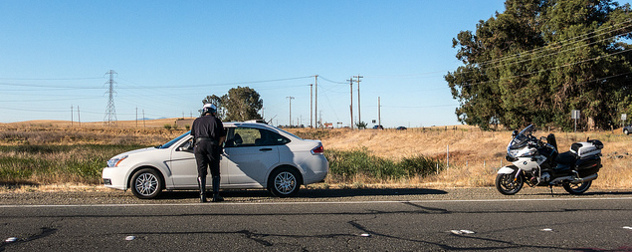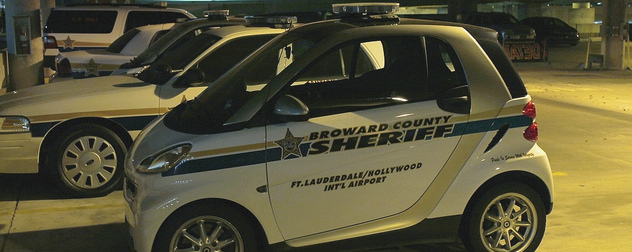Nearly a year ago, a faulty brake light led to a deadly police encounter whose aftermath was streamed live to a horrified public. Now a Minnesota jury’s verdict has turned human tragedy into legal farce.
Officer Jeronimo Yanez shot Philando Castile during a traffic stop, firing seven times into a vehicle that also held Castile’s girlfriend and her 4-year-old daughter. The girlfriend, Diamond Reynolds, livestreamed the shooting’s immediate aftermath to Facebook, drawing attention and outrage nationwide. The incident took place in the middle of a national conversation about fatal police shootings, especially of black men, and Castile’s death triggered weeks of protest last summer.
In November, prosecutors charged Yanez with second-degree manslaughter, saying that “no reasonable officer” would have used deadly force in the same circumstances. They also charged Yanez with two felony counts for intentionally discharging the firearm, endangering Reynolds and her daughter. After five days of deliberation last week, jurors acquitted Yanez of all charges.
The verdict predictably triggered outrage and protests. Valerie Castile, Philando’s mother, angrily denounced the jury’s decision. “My son loved this city,” she said, “and this city killed my son.” On Friday evening, protestors gathered at the state Capitol in St. Paul, Minnesota, and eventually a smaller group of them moved to Interstate 94. After a 90-minute standoff with police, the group dispersed peaceably, though a few were arrested early Saturday morning.
Yanez’s acquittal is dishearteningly routine. Police officers are seldom charged for fatal on-duty shootings, and convictions are even rarer, The Washington Post reported. Of 82 nonfederal law enforcement officers charged for a fatal shooting while on duty, 29 were convicted of a crime, mostly lesser offenses. The city of St. Anthony, where Yanez worked, announced that it would offer him a voluntary separation agreement but emphasized that, regardless of the details of that agreement, Yanez would not return to active duty. This resolution is likely cold comfort for Castile’s loved ones, though it is at least better than the alternative of Yanez returning to the streets in his old uniform.
Although Yanez was employed by the city of St. Anthony, Castile’s fatal shooting occurred in another municipality, Falcon Heights. The latter community has no department of its own; it hires St. Anthony’s officers to provide for public safety. Through a large number of traffic stops, which generate fines for Falcon Heights, the arrangement is essentially self-funding as long as the hired guns pull their financial weight by generating a satisfactory quota of fines. Bounty hunting is a distasteful but integral part of this arrangement.
Castile’s death became a flashpoint largely because Reynolds broadcast it to the internet, but it was one of 963 fatal police shootings in 2016. As I wrote last summer, trying to change hearts and minds, while admirable, is not enough in the face of such damning statistics. Officer Joseph Kauser, Yanez’s partner, testified that he believed Yanez had followed protocol. Yanez himself testified that he thought he was going to die if he did not defend himself.
Castile’s death illustrates the failures inherent in the existing system. Reynolds said she livestreamed the encounter with Yanez out of fear for her own life after the officer shot Castile. Alton Sterling had been shot by police officers in Baton Rouge, Louisiana only a day prior, and the deaths of Eric Garner and Michael Brown were still very much on the nation’s mind; it is hardly surprising that Reynolds feared she might not survive the encounter. Her video made it clear the officers involved in the stop viewed her as a potential threat, despite the absence of any indication that this might be the case.
A Tampa Bay Times investigation of police shootings in Florida reviewed 827 cases over a six-year period. That investigation identified a few systemic problems that seem to lead to most questionable police shootings: dubious traffic stops; operations that specifically target minority neighborhoods; and bad judgment that unnecessarily puts officers in situations where they feel threatened.
After being stopped for a broken taillight, Castile alerted Yanez that he was carrying a gun, a weapon for which he held a permit. This, too, was following recommended protocol. Yanez claims Castile was reaching for the gun, a fact Reynolds has vehemently disputed; what is known is that Yanez fired into the car seven times mere seconds after Castile volunteered that he was armed. Prosecutors said that Castile’s last words were, “I wasn’t reaching for it.” Yanez may have truly been afraid in that moment. But that does not justify his actions, and apart from the hypnotic effect of his shiny police badge, it scarcely explains the jury’s decision to acquit him.
While the good people of Minnesota have no reason to be proud of this verdict, Yanez’s acquittal is symptomatic of a problem that is not exclusive to any one community. We should stop asking police officers to act as tax collectors, or to inspect automobiles, or to keep an eye out for cash and other valuable property to fund their departments. We should have real conversations about how to create systemic changes that minimize unnecessary stops and unnecessary escalation. A widening divide between law enforcement and the communities that they serve not only undermines good policing, it puts citizens at risk for deadly errors in judgment.
Gov. Mark Dayton called Castile’s death “a terrible tragedy” in a statement after the verdict. He isn’t wrong. Future tragedies, like this one, can be avoided – but verdicts like the one in the trial of Officer Yanez won’t help.














June 22, 2017 - 3:20 pm
While no one, including law enforcement personnel can reasonably justify the officer’s action, what likely leads to acquittal in such cases is that such deadly encounters, while tragic, are not necessarily criminal. A doctor who even grossly negligently causes the death of a patient, is rarely seen as a criminal case. The same is true during military operations. The reasoning is that it highly unlikely that an officer goes to work with the intent of killing a civilian. In several high profile cases, prosecutors seeking murder convictions go too far and I think, for right or wrong, this causes pause in a jury who is tasked with possibly sending an officer to jail.
Regardless of the routine nature of the stop (infraction, misdemeanor, or felony), which you characterize as the officer taking on the role of tax collector (which I can argue another day), it seems the art of defusing situations have been lost. Officers seem all too willing to reach for a device, whether it be pepper spray, baton, taser, or pistol. There is a use of force “ladder” which we all learn from our academy days. It seems the lowest rung of the ladder—talking and diffusing—has fallen by the wayside. When his happened I don’t know, but the loss of this critical ability has to be considered a major factor in these deadly encounters.
Editor’s Note: Craig Elkin is a retired police sergeant who served with the police department of Middletown, Connecticut. He is the brother of the author of this post.